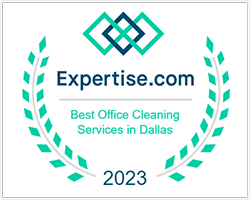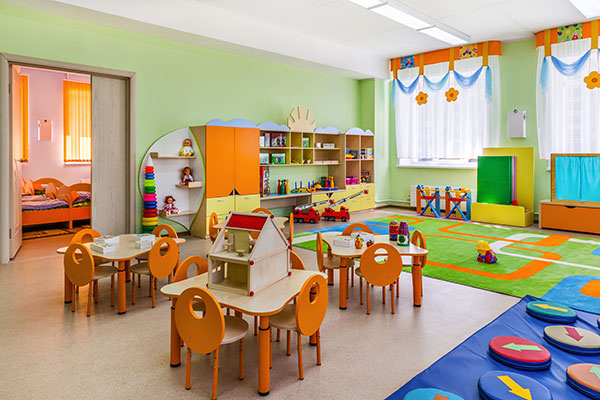Are you responsible for the disinfection of your school or daycare facility?
In this day and age, it's critical to keep children safe from harmful bacteria, viruses, and other contagions that can spread like wildfire among our youngest populations.
Our experts have put together some of the top tips on keeping your educational space clean and comfortable all year round.
Let's take a look!
Pay Close Attention to High Touch Surfaces
You may have heard the term “high touch surfaces” a lot in the last little while.
Why are they so important to keep clean?
Frequently touched surfaces include:
- Doorknobs
- Light switches
- Faucets and fountains
- Toilets
- Chairs
- Counters
- Handrails
- Touch screens
- Computers
- And much more
These areas are most likely to be central to the spread of germs like influenza, the common cold, pneumonia, and more.
When many people use an item between cleanings, it is more likely to harbor pathogens that can make you sick.
Therefore, it is essential to use the right cleaning solutions, knowledgeable janitorial staff, and a dedicated cleaning schedule to achieve the best levels of disinfection.
Keep Horizontal Surfaces Free of Germs
Horizontal surfaces refer to anything that can accumulate a layer of dirt and grime. These surfaces include:
- Windowsills
- Flooring
- Shelves
- Desks
- Ledges
- Benches
- Light fixtures
When working on these areas, it's crucial to use approved cleaning solutions and ensure the manufacturer's directions located on the bottle are followed.
Here's why:
There is a big difference between cleaning, disinfection, and sanitization.
What Is Regular Cleaning?
Regular cleaning is where all professional cleaning services begin and typically involves using soap and water to remove grime, dust, dirt, and visible debris.
Unfortunately, washing, rinsing, and using soap alone are not strong enough to reduce and remove harmful pathogens.
Additional janitorial methods must be used to eradicate the agents that cause us to become ill.
Sanitizing Reduces Bacteria Populations Only
Choose your cleaning solution according to the type of contaminant you are dealing with.
It's important to consult with the label on your bottle of cleaning solution before you get to work. This will tell you if the product you have chosen can handle the mess.
Understanding how the product works and what types of bacteria it is effective against is critical. Without the proper knowledge of application and wait times before removing, the work you are doing could be ineffective.
Most companies put usage instructions right on the bottle, so instruct your cleaning staff to read labels carefully.
Disinfection Inactivates or Completely Destroys Bacteria and Viruses
When you want to clean up the more undesirable types of messes educators and childcare professionals face on a regular basis, you'll need the power of disinfection.
According to their manufacturer's instructions, these are the chemical solutions that completely destroy or deactivate bacteria and viruses.
Again, you must read the label before use to confirm you are using the right tool for the job.
Now that you know the difference between these three levels of janitorial service and how they work together to produce the best effects, we can move on to more tips!
Make Your Floors a Priority
It's no secret. Kids spend a lot of time on the ground, playing, reading, imagining, and listening. Your daycare or educational facility should recognize this and make disinfecting floors a top priority.
Generally, there are 4 steps to keeping school floors in top condition by mopping properly and on a regular basis.
These are:
- Remove any dry soil or other types of debris with a broom and dustpan or vacuum.
- Set up the area for wet cleaning by implementing wet floor signage and removing any floor mats or other obstructions from the area.
- Perform wet cleaning and be sure to change mop heads and cleaning solutions frequently so you can be sure you're not just spreading dirt and germs around instead of removing them.
- The method you choose for drying floors usually depends on how much time you have before floors will be used next. You can choose the air-drying method or you can employ a dry mop to remove excess moisture from floors.
To keep floors looking their best, additional custodial services are required.
Of course, this will depend on how much traffic your specific building receives.
To get the best-looking flooring, you'll need to perform the following:
Wax Stripping
The top layer of most school and daycare facility settings is a wax that gives your flooring a nice and inviting shine. When this layer gets dirty, soil and grime can become trapped within the wax.
Typically, a full hard floor surface strip and rewaxing are performed once a year, in the summertime when students are no longer in class.
Scrubbing
Once the protective wax coating is removed and cleaned up, it's time for scrubbing. During the stage, you'll use a buffing machine to scrub away any dirt or contaminants that have penetrated the wax layer.
After everything has been scrubbed away, you can begin to apply a fresh coat of wax. Once this is applied, you'll need to seal it with an approved wax sealer.
Then you're ready to buff out the wax for a nice shine.
Buffing and Polishing
The final stage of the process is buffing out the wax to produce an exceptional finish. You can always tell when a wax floor has been freshly polished because it will appear scratch and stain-free—with a shine!
Clean Bathrooms Often
The restrooms in your educational facility or daycare setting see a lot of use throughout the day.
Children are not well known for being masters of bathroom etiquette, and you may see substantial soiling in these areas.
The following tips will help you keep this area in excellent condition:
- Educate students on proper bathroom procedures to help reduce the spread of germs. For example, washing hands is a critical way to keep contagions at bay.
- Keep restrooms well stocked with things like soap, paper towel, and toilet paper so students aren't tempted to get creative with toilet tissue substitutes or skip a hand washing opportunity.
- Replacing paper towel dispensers with air dryers is a great way to keep mess off the floor when students miss the garbage can when they're in a hurry.
- Check on the status of and disinfect washrooms regularly.
Cafeteria and Lunchroom Cleaning Success
Cafeterias and lunchroom settings can be a little chaotic once filled with hungry learners eager to chat with their friends.
Follow these suggestions to create a safe and healthy environment for students:
- Disinfect the top and bottom of lunchroom tables and chairs.
- Frequently disinfect shared areas like microwaves and cafeteria window counters.
- Make sure trash and recycling receptacles are emptied regularly and ready to receive food wrappers and empty bottles of water.
- Disinfect walls, windows, door handles, and any other high-touch surfaces in the room on a regular schedule.
- Attend to spills and messes as they happen, where possible.
- Encourage kids to take care of their own space and lunch wrappings to the best of their ability.
By employing these simple tips, you can keep your school or daycare facility in strict compliance with local safety regulations.
Did this list help you formulate a plan for a cleaner learning or childcare environment? Need some help checking all the boxes on your new to-do list? Contact Prestige Janitorial Services today at (972) 372-9071.



